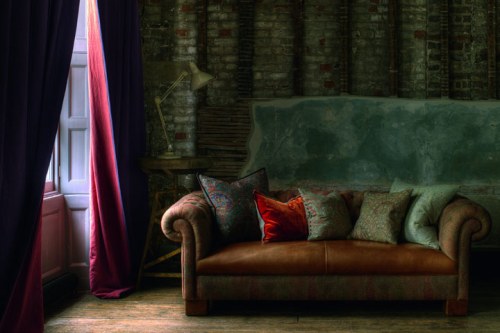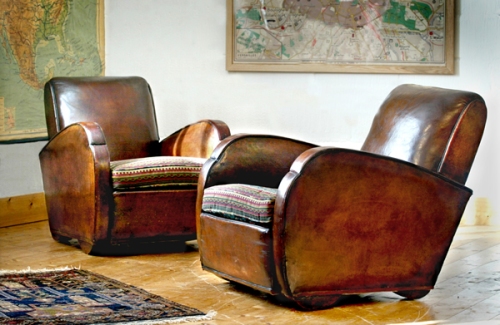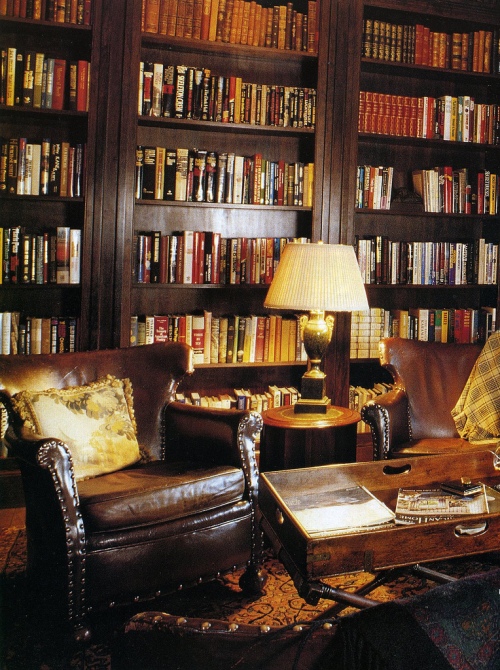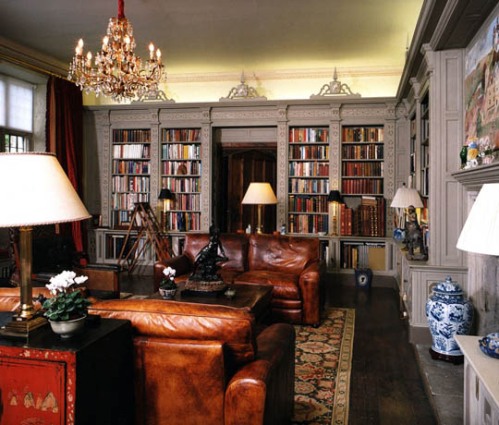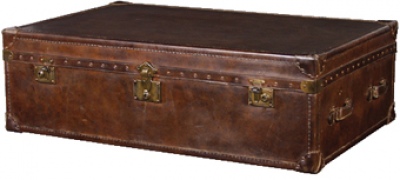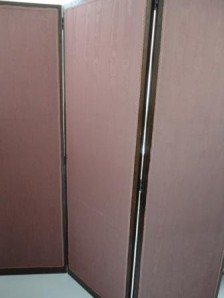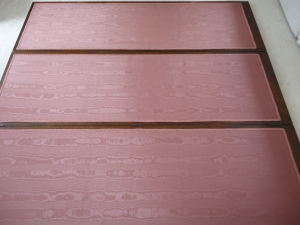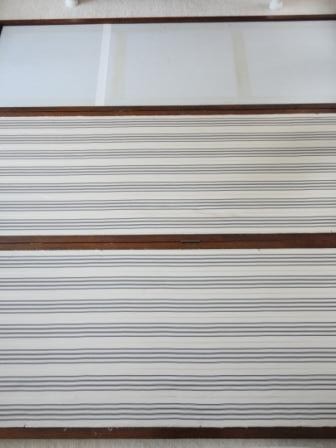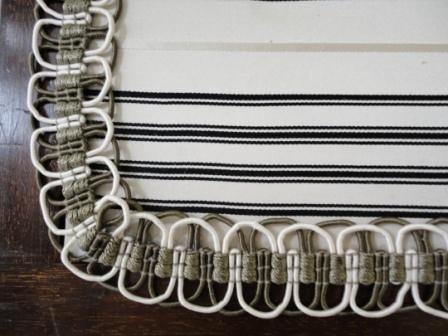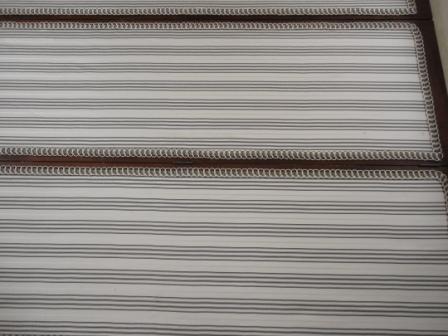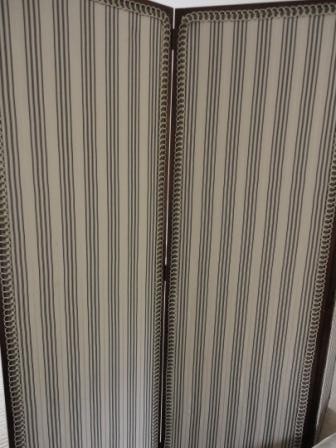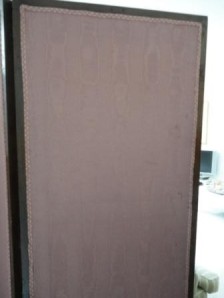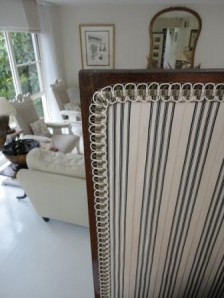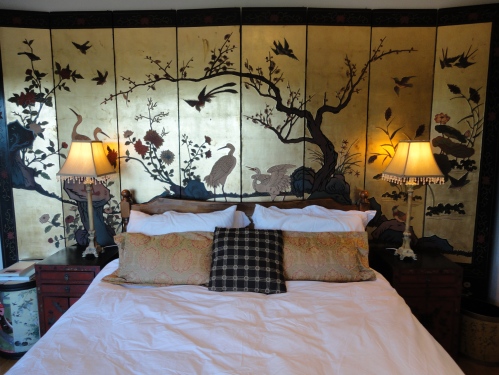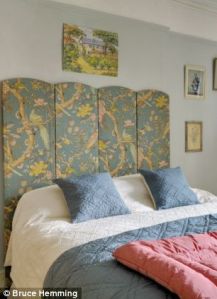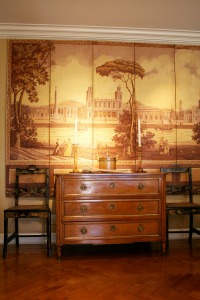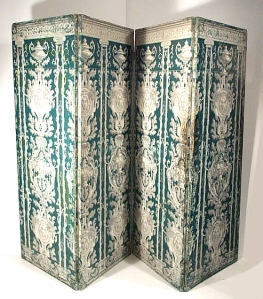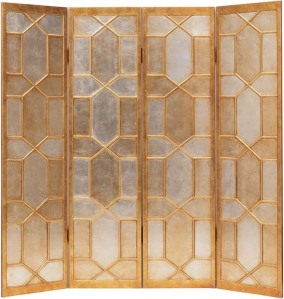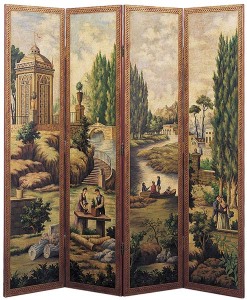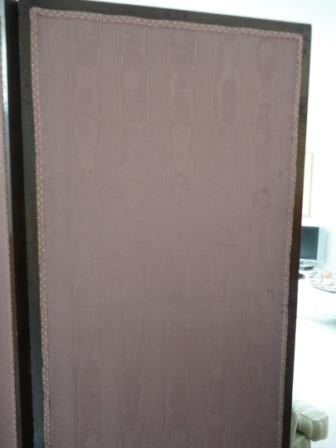I love dining on holiday – those long languorous meals, the relaxed settings that make you want to sit and chat for hours…. So I changed my dining room around to get more of that feeling.
Initially the table had been in the middle of the room, which didn’t work as there are too many passageways that meet in this room: two stairs, the kitchen, the laundry and an outside area all enter this space.
I had studied how we used the room (the secret to the best interiors). I always sat with a cookery book and a cup of tea. So I needed a comfy chair. Then when we had one, the ‘man’ had nowhere to sit. So we decided to shape the room around how we use it.
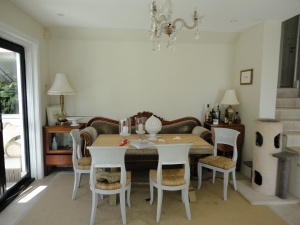
I divided the room into two – a seating area, with a sofa (as I thought that would encourage people to sit and chat) and some chairs to sit and have tea and read cookery books. There was a lot of work.
I had already redone the chairs and the table (see older posts):
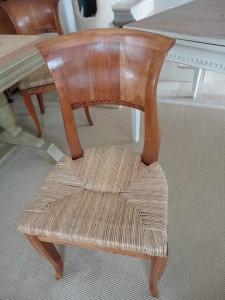
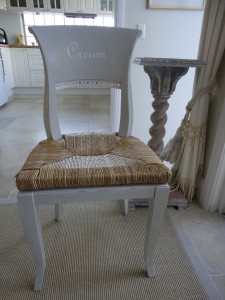


We built the tongue and groove panelling to conceal the door under the house (which was never used) and to create a cosy feel for the dining nook (a while back now for those of you who’ve been following!)
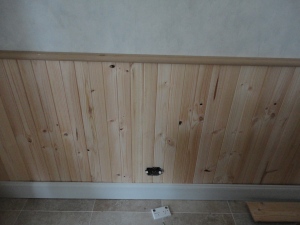
I added a colour wash paint effect to the wall above. Remember how I stepped in the paint and spilled it everywhere?
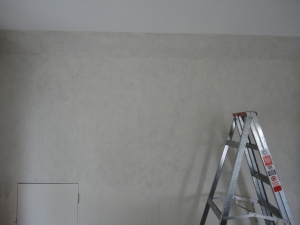
We added tongue and groove down the stairs
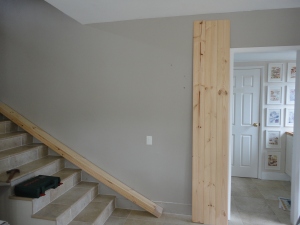
This was a massive project and it took the two of us a whole (exhausting) weekend.
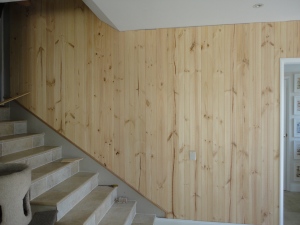
So a reminder of how it was before – well actually, part way through as the chairs etc are done….

And here it is after – in all its glory.
The sofa is an inherited piece (yes – these can be worked into your rooms!) recovered in silk velvet. I wanted a seating arrangement that would encourage long rowdy meals! A sofa invites you to stay awhile and chat – so I used this to create a banquette arrangement. I always love sitting in booths in restaurants and this is a little bit like that.
The cushions are World War Two silk escape maps (I have some of these for sale if you would like). They pick up the casual sketching of the artwork – of the Australian outback.
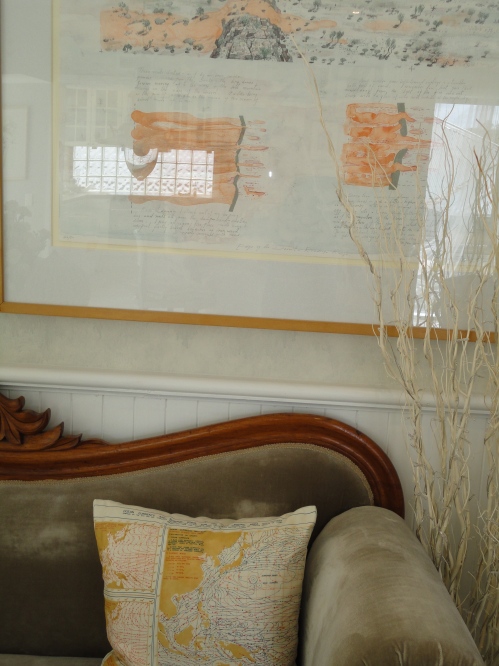
At either end of the sofa are twig lights – yes – these actually light up! I’ve shown this further on. Aren’t they gorgeous? They help soften the corners of the room, and their organic outline is echoed in both the paintings and the cushions.

The pendant lighting helps to define the area as separate. I wanted a nautical look and these pendant hurricane lamps are perfect. Can you believe they are from IKEA?
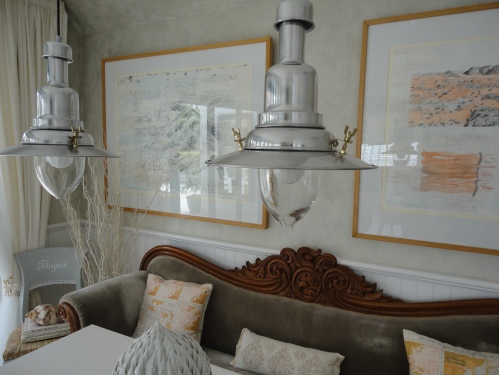
I chose bulbs at first that were too blue in light (a common problem with eco bulbs). It’s really worth getting the lighting colour right as it changes an atmosphere immediately.
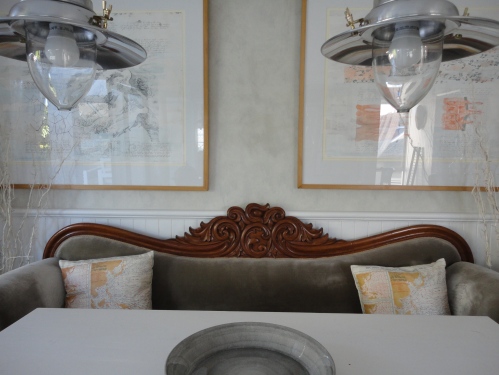
I layered two curtains – but the heavy linen one doesn’t close. It serves two purposes – one is to create dramatic vertical lines from floor to ceiling to make the room look taller and more elegant. The second is as a sound baffle to make the acoustics more pleasant.

The muslin curtain does close and is caught back with an old bone necklace.
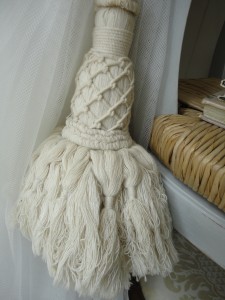
A simple cotton tassel pulls the two curtains back together, softening the lines and adding texture.
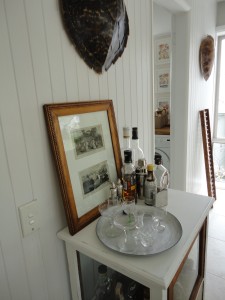
On the new tongue and groove wall, two tortoise shells frame the doorway into the Laundry. One sits over the newly refurbished drinks cabinet. The other has an antique miniature ladder running up to it.
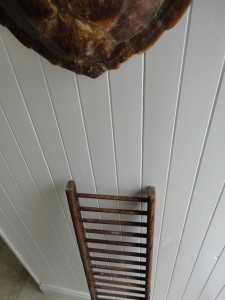
The top of the drinks cabinet entices with antique engravings, a selection of bottles and silver. Together with the tortoise shells they create a mood of travel, exotic places, beaches and other wonderful conversation topics.

Opposite the banquette dining nook are two armchairs (you can see them recovered in previous posts) and two spare dining chairs. A lovely spot for a pre-dinner drink or a cup of tea. I spend time here mulling over what to cook!
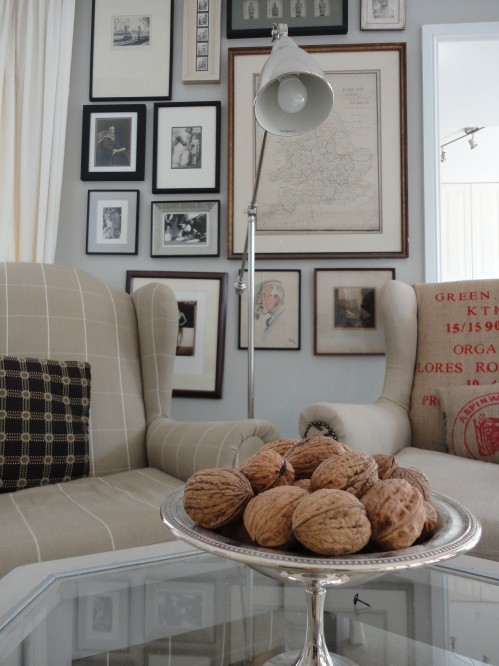
The double hanging curtains add texture and softness to the doors that lead out to the terrace.

For dinner parties you can really create an atmosphere with lighting. The twig lights immediately create a party with their fairy light frivolity.

On the banquette sofa you are surrounded by the soft glow of fairy lights – it feels quite magical! The colour wash effect helps create a feeling of age and character in this modern house.
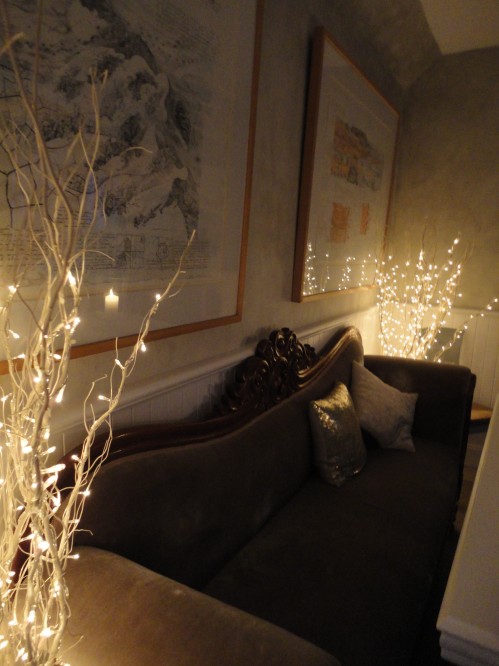
It’s been a huge amount of work – but really worth it. The most important part of the whole process was having a complete vision of the final product all the way through, so that all decisions and changes led to a cohesive look.
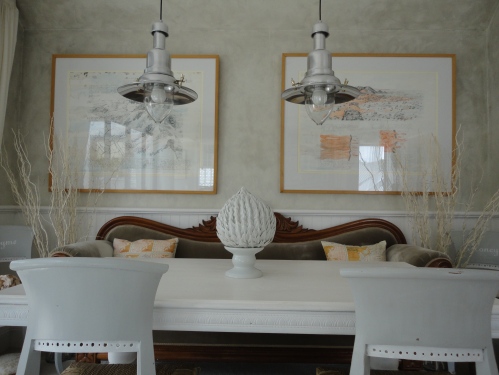
Have you been inspired by holiday to change a room?
One Response »

